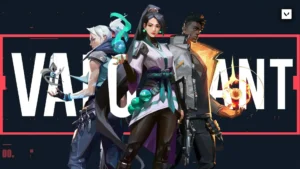Introduction
Valorant’s Revenue Strategies: Valorant, developed by Riot Games, has not only conquered the gaming world with its tactical gameplay but has also mastered the art of generating revenue. Let’s delve into the game’s financial success by exploring various revenue streams and strategies.
1. In-Game Purchases
a. Skins and Cosmetic Items
- Description: Valorant offers a plethora of cosmetic items, including weapon skins and character cosmetics.
- Why: These items enhance visual aesthetics, allowing players to personalize their gaming experience.
- Benefits: Revenue from these purchases contributes significantly to the game’s financial success.
b. Characters and Agents
- Description: Unlocking new agents often involves in-game purchases.
- Why: Offers players diverse gameplay styles and keeps the game dynamic.
- Benefits: Provides a steady revenue stream while keeping the player base engaged.

2. Freemium Model
- Description: Valorant operates on a freemium model, allowing players to access the core game for free.
- Why: Attracts a larger player base and creates a thriving community.
- Benefits: Encourages players to spend on in-game purchases voluntarily, sustaining the game economically.
3. Battle Pass System
- Description: Valorant introduces seasonal battle passes with tiers of rewards.
- Why: Fosters player engagement and loyalty throughout a season.
- Benefits: Players are motivated to invest in the battle pass, contributing to revenue and enhancing their gaming experience.

4. Partnerships and Collaborations
- Description: Valorant collaborates with brands, sponsors, and partners.
- Why: Expands the game’s reach and brings in additional revenue.
- Benefits: Creates a win-win situation, providing players with unique experiences and the game with financial support.
5. Potential Concerns and Controversies
- Description: Some players may express concerns about the impact of monetization on the gaming experience.
- Why: Balancing revenue generation with player satisfaction can be challenging.
- Benefits: Addressing concerns transparently can build trust and maintain a positive community.

Conclusion
Valorant‘s success isn’t just about sharpshooting and strategic gameplay; it’s about mastering the delicate dance between profitability and player satisfaction. By understanding the game’s revenue strategies, gamers and industry enthusiasts gain insights into the dynamics that fuel Valorant’s ongoing success.
Note: The information provided is based on publicly available data and observable patterns in Valorant’s monetization.
Frequently Asked Questions
Q1: What types of in-game purchases are available in Valorant?
A: Valorant offers a range of in-game purchases, including weapon skins, character skins, gun buddies, and other cosmetic items.
Q2: How does the freemium model work in Valorant?
A: Valorant is free to play, but it offers premium content for purchase, such as skins and other cosmetic items, providing players with optional ways to spend money.
Q3: Can you explain the impact of the battle pass system on player engagement?
A: The battle pass system encourages continuous player engagement by offering a tiered progression system with rewards, fostering a sense of accomplishment and incentivizing spending.
Q4: Are there any notable partnerships or collaborations contributing to Valorant’s success?
A: Valorant collaborates with brands, influencers, and sponsors to enhance its visibility and potentially secure additional revenue streams.
Q5: What are some common concerns raised by the gaming community regarding Valorant’s monetization approach?
A: Players may express concerns about the pricing of in-game items, potential pay-to-win elements, or controversies surrounding certain monetization practices.

